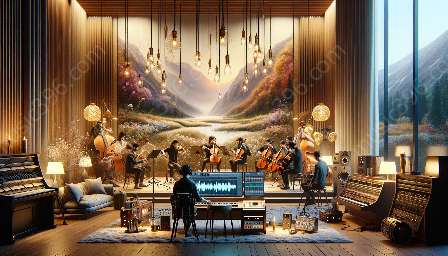Modal systems in music offer unique tonal structures and expressive capabilities, leading to diverse pedagogical approaches to analyze and teach these systems effectively. This topic cluster delves into various modal concepts, characteristics, and instructional methods, providing comprehensive insights for music analysis enthusiasts, educators, and students.
Exploring Modal Systems in Music
Modal systems in music refer to a set of scales, harmonies, and melodic structures that deviate from the traditional major and minor tonalities. They are characterized by the use of modes, which are scales that have specific interval patterns and create distinct tonalities.
Modal systems have deep historical roots, with origins in ancient musical traditions from around the world, including Greek, Indian, and Middle Eastern music. In Western classical music, the modal system was prevalent before the widespread adoption of the major-minor tonal system, making a resurgence in various musical movements throughout history.
Key Characteristics of Modal Systems
Understanding the characteristics of modal systems is essential for effective music analysis. Key features of modal systems include:
- Distinct modal scales with unique interval patterns and tonal qualities
- Frequent use of drone or pedal notes to establish modal tonalities
- Modal harmonies that differ from conventional chord progressions
- Expressive melodic motifs and ornamentations intrinsic to specific modes
Pedagogical Approaches to Modal System Analysis
Teaching and analyzing modal systems in music require comprehensive pedagogical approaches that cater to the distinct characteristics of these tonal structures. Educators and music analysis enthusiasts often employ various methods, some of which include:
- Comparative Listening: Introducing students to modal compositions from different cultures and historical periods to develop a broader understanding of modal systems.
- Harmonic Analysis: Exploring the unique harmonic progressions and chord structures characteristic of modal music to decipher the tonal movement and functional harmony.
- Modal Ear Training: Developing students’ auditory recognition and comprehension of modal scales and tonalities through ear-training exercises and melodic dictations.
- Modal Improvisation: Encouraging students to experiment with improvisation within modal frameworks to internalize the expressive qualities and characteristics of specific modes.
- Modal Composition: Engaging students in composing modal pieces to gain hands-on experience in crafting melodies and harmonies within modal systems.
Connecting Modal Systems to Music Analysis
Music analysis plays a crucial role in understanding the intricate compositions and performances within modal systems. By applying analytical tools and methodologies, enthusiasts can gain deeper insights into modal music. Some important aspects of connecting modal systems to music analysis include:
- Modal Scale Analysis: Examining the unique intervallic structures and modal scales to identify characteristic features and tonal tendencies.
- Modal Harmony Analysis: Deconstructing the harmonic progressions, chordal structures, and modal cadences to comprehend the harmonic intricacies within modal music.
- Modal Melodic Analysis: Studying the melodic motifs, ornamentations, and phrasing techniques within modal compositions to discern the expressive nuances and stylistic elements.
- Cultural and Historical Context: Placing modal compositions within their cultural and historical contexts to grasp the influences and significance of modal systems across different musical traditions.
Case Studies in Modal System Analysis
Exploring case studies of modal system analysis can provide practical demonstrations of the discussed pedagogical approaches and their implementation in music analysis. Case studies can encompass in-depth analyses of specific modal compositions, highlighting the application of various methods and their impact on understanding modal systems.
Conclusion
By delving into pedagogical approaches to modal systems in music analysis, enthusiasts, educators, and students can gain a comprehensive understanding of modal concepts and develop effective analytical tools to unravel the intricacies of modal compositions. Employing diverse pedagogical strategies and connecting modal systems to music analysis fosters a deeper appreciation for the expressive capabilities of modal music across cultures and historical periods.

































